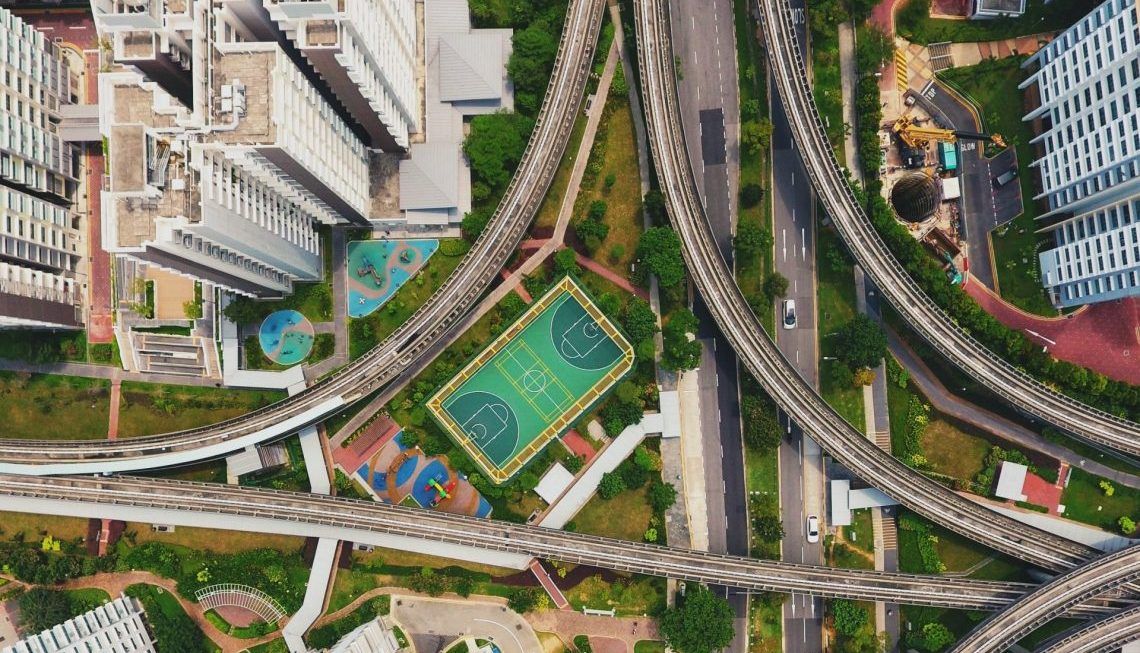How Singapore is powering its sustainable energy vision
By Shirley Tay
Interview with Sau Sheong Chang, CEO of energytech company SP Digital.

Some countries have pressed on with their sustainability agenda, despite the massive amount of resources poured into pandemic response. Canada is using AI to speed up clean energy research; Germany is turning to renewable energy; and Singapore has embarked on a national agenda to work towards its target of net zero emissions.
GovInsider caught up with Sau Sheong Chang, CEO of SP Digital, to find out how he’s powering Singapore’s sustainable energy vision with smart meters, electric vehicles, and a digital twin network.
Building sustainable, smart towns
Commercial buildings and industrial complexes use 80 per cent of Singapore’s electricity. Helping these buildings save every bit of electricity counts.
SP Digital has partnered Changi Airport and Nanyang Technological University to pilot smart meters that monitor energy use. These meters flag sudden spikes - which may be a sign of leaks - and have helped the airport cut operational costs significantly.
SP Digital wants to extend this success to residential buildings, says Chang. 80 per cent of the population lives in public housing flats, so that was a good place to start.
The company has installed Eco Boards that track residents’ utilities in Tampines, a neighbourhood in Eastern Singapore. These boards provide real-time figures of the block's water and electricity consumption, and the carbon emissions generated over the previous 24 hours.
Chang hopes this will nudge residents to reduce their energy consumption and help town councils better manage utilities in common areas.
SP Digital has also been working with the Housing and Development Board (HDB) since 2018 to plan for a “smart energy town” in Tengah. The company plans to carry out centralised cooling for the whole town, which will help lower the estate’s carbon footprint.
The centralised system, powered by solar energy, will transport chilled water from rooftop tanks into air conditioning units to bring down temperatures. That way, compressors will no longer need to be installed outside the buildings.
This will save about 30GWh per year - equivalent to powering another 7,000 four-room HDB flats annually.

These efforts will be complemented by the SP Utilities app, which allows users to track their individual energy consumption and pay their bills.
That will help residents know how much they are consuming; and what impact it has on the environment. Chang hopes this information will nudge them to consume energy responsibly.
Tapping on digital twins
SP Digital has built a digital twin of the electricity network, which includes the smart meters that are deployed across the island. That helps the company detect any issues and carry out predictive maintenance, saving “significant hours”, Chang says.
The team has also started working on a digital twin of Singapore’s gas network, he reveals. Sensors have been deployed at different “critical parts” of the gas network to collect data on gas pressure. Machine learning will detect and flag anomalies.
This digital twin model has also helped SP Digital quickly determine how changes to one part of the network will impact the rest. “Today, it is all very manual. We need some guy who really understands the network to make a guess on how it works.”
This is being trialed at a small scale and has been pretty successful, Chang says. SP Digital is looking at rolling it out across the island.
The company started out with wanting to twin every single equipment, but that proved to be too difficult, he says. It also wasn’t as valuable as a digital twin of the network.
There’s not going to be a straight road in any journey, Chang says. The team had to “spend some time, making mistakes, and then freaking out”.
“But we have found out what actually works now and we are going towards that direction.”
EV chargers
SP Group has the largest fleet of EV fast chargers in Singapore that can charge a car in about 30 minutes, versus the usual six to eight hours.
Chang’s team has built a system to manage the fleet of chargers. Data collected is used to better gauge where EV drivers are heading, and where the next fleet of chargers should be.
The company hopes to be able to predict where the next available charging stations will be, depending on the driver’s location, Chang says.
Drivers can currently use the SP Utilities app to locate chargers and pay for charging.
Keeping sensors secure
Keeping the sensors secure is a crucial priority, as the large number of IoT devices creates new entry points for hackers.
IoT devices are indeed “very prone to a lot of these cyber attacks”, Chang says. It is crucial to secure these devices in the energy sector, as one breach can result in a nationwide power outage. In 2015, Russian hackers shut down parts of Ukraine’s electrical grid, cutting power supply to 225,000 people, Reuters reported.
SP is taking the necessary steps to secure these devices. It has a separate security team to monitor the security of its networks, equipment, and sensors, Chang says. The company has built security into the hardware and software of IoT devices, he adds.
Looking back on his five-year journey in SP Digital, Chang says he’s excited for what’s to come. “When SP group started building EV charging stations a few years ago, we were looked upon as the foolish ones.”
But this has changed. The sustainability movement really has gone beyond the “tipping point”, and that “gives me hope that a lot more is going to happen in the coming years”, he says.
That validates SP Digital’s founding vision, Chang adds. There is indeed no better time to tackle climate change. Energy is a good place to start.
